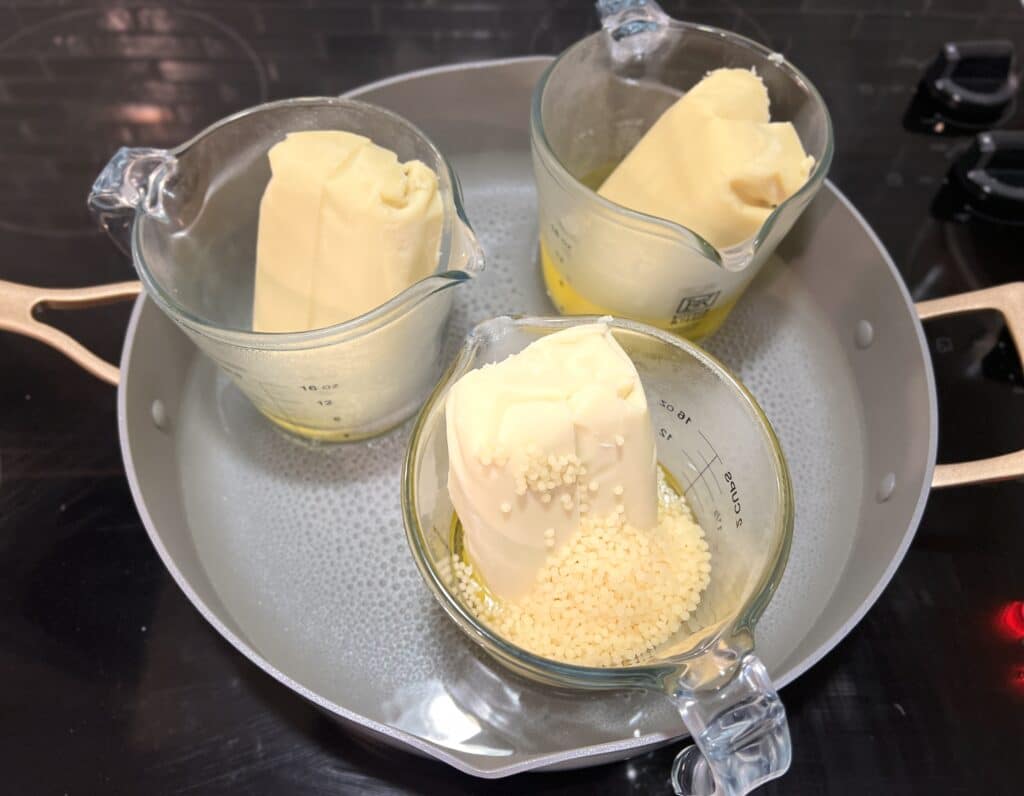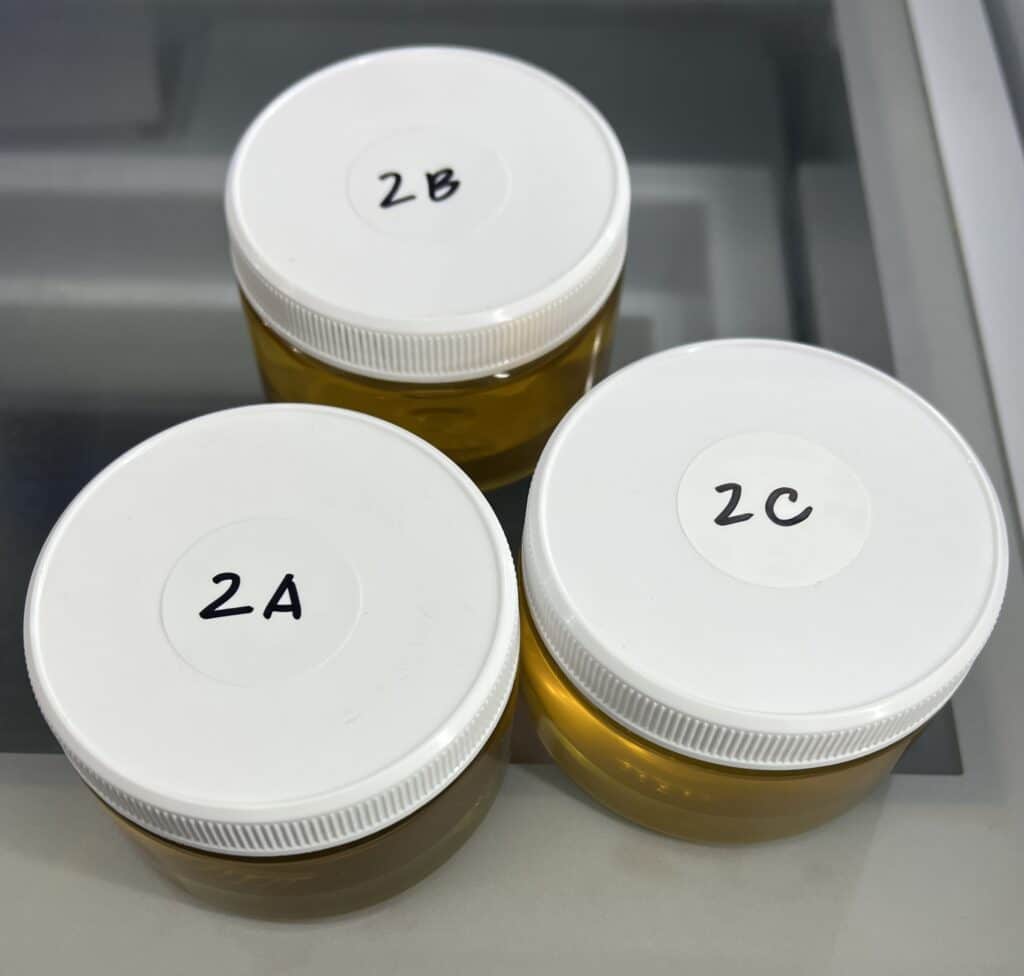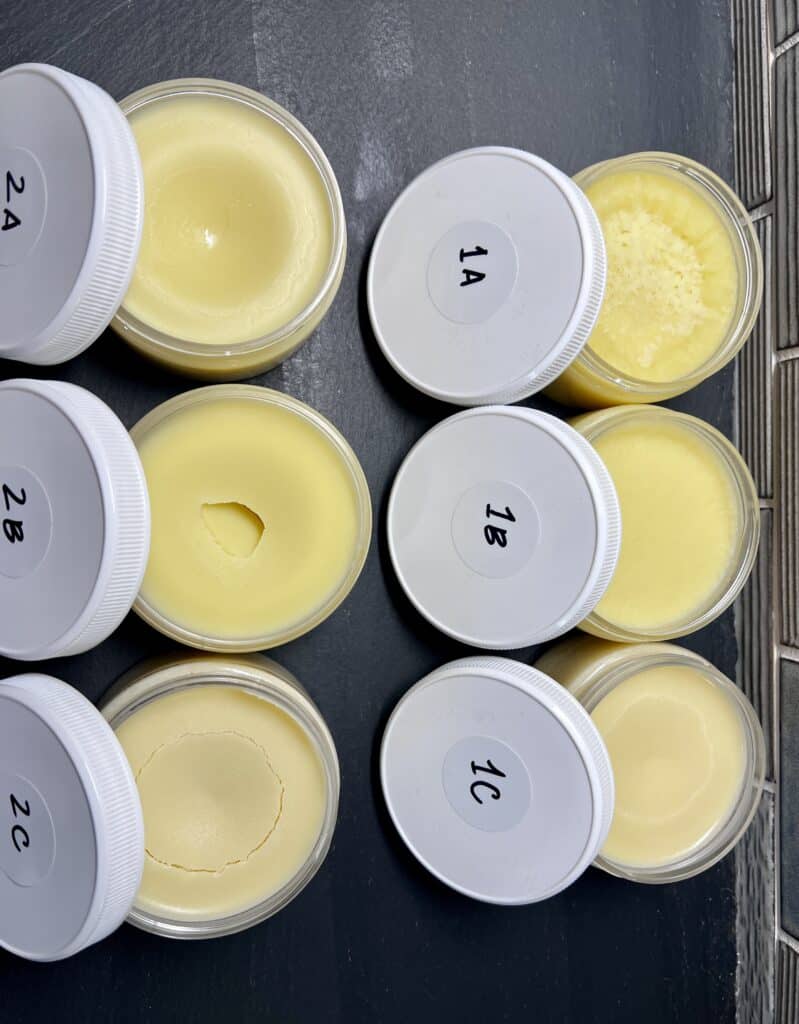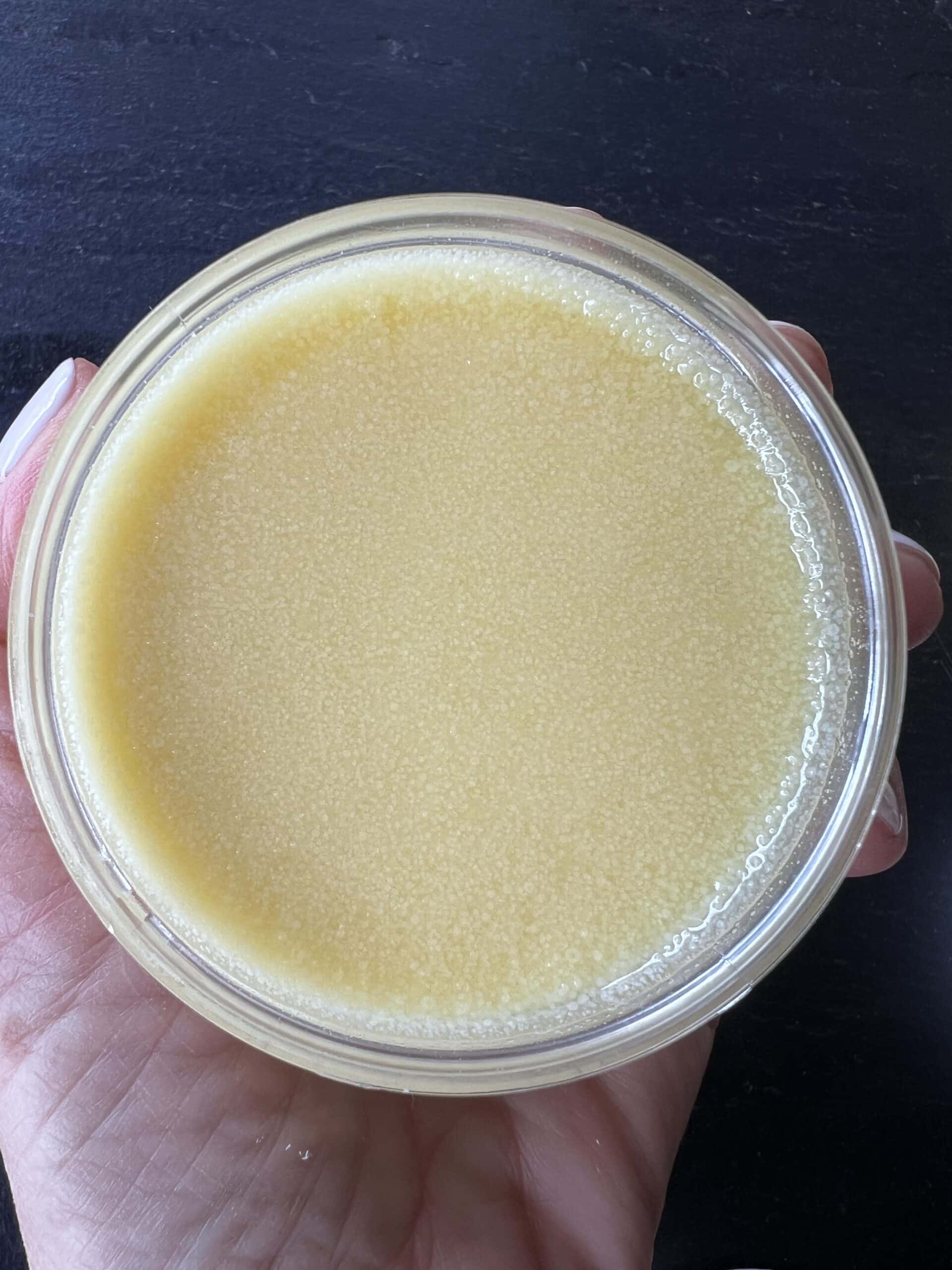If you have tried making DIY body butters or other butter/oil body products in the past, or even balms (these contain some wax in addition to the butters and oils), you may have met the skincare DIYer first challenge: gritty or grainy products.
I have some tips for you on how to avoid that, but first I want to let you in on a couple of important things.
Grainy body butters are not ruined, they work just as well, and the “grainy” texture will usually melt on skin contact and have the same wonderful final results on your skin.
The grittiness is nothing but the fatty particles of butter that can form if your product does not cool quickly enough, or if your product is stored in areas where the temperature fluctuates enough to partly melt and re-solidify your product. This can occur naturally in a home where the temp fluctuates by 10-20 degrees, or it can happen when your product is in transit and sits in a delivery truck for a few hours, or in a storage warehouse (for example UPS or USPS).
Choosing all-natural products that do not contain emulsifiers, stabilizers, and other “chemicals” or synthetic ingredients, comes at a small price – a possible variation in textures and some graininess. The choice is ultimately yours, but since these products do not lose their efficacy, and it’s simply an aesthetic flaw, I beg you to not stress if your wholesome DIY body butter or natural product has some grittiness.
Avoiding Grainy Butters – Experiment A vs B
I have made two sets of body butters, one with the wrong way to go about it (test A), and the other with the right way to go (test B).
Both sets of butters were made with the same ingredients and simple formulas:
Body Butter #1: Unrefined Shea Butter
Body Butter #2: Unrefined Shea Butter + Apricot Oil
Body Butter #3: Unrefined Shea Butter + Apricot Oil + Beeswax

I chose very common ingredients because for the purpose of this experiment, using one butter or oil versus another is not what matters. The COOLING system is what will produce either a smooth or gritty final product.
The first step, like it is in most formulas is to melt your ingredients. I used a double boiler system by adding about 2 inches of water to a shallow pan. I put it on low heat, and put my 3 body butter ingredients in separate glass containers. Then I placed the containers in the pan.

I let everything melt completely. Body Butter #1 and #2 were quick to melt, about 15 minutes. The 3rd one took close to 45 minutes of constant stirring to melt the beeswax.
I then poured everything in jars. And here is where the experiment starts.
Experiment A – the wrong way
I placed a set of each of the 3 body butters, 1A, 1B and 1C, on the counter top of my kitchen to cool at room temperature. My house is kept at about 72F, but this would work just the same if your home temp is anywhere between 50F and 80F (below or above that it’s not common unless you live in the arctic or tropical forest and have no heating or cooling system :/ )

This gradual, slow cooling of your body butters creates a separation of the most fatty parts of your body butter, this will show up in grittiness throughout your formula. Products with beeswax will be similar, though beeswax is faster in cooling, some grittiness will still be in the final result.
Experiment B – the right way
I placed the second batch of 3 body butters in the fridge (2A, 2B, 2C), and this allowed for the ingredients to cool quickly, not giving the fatty particles time to separate and turn grainy.

The freezer can also be used for this step, but for this article I’d like to stick to the most simple ways of doing this process first.
Using the freezer, whipping your body butters, and having more layered or complex formulas comes easy once you master these basic steps.
In summary, it’s all about how quickly you cool your body butters.

What if I do it the right way, but over time my product still turns grainy?
As I mentioned earlier, one cause of gritty body butters is temperature fluctuations when the product is stored or when it’s shipped.
If you follow the correct method above (Experiment B), your product should be stable even if it melts a bit, and your best option in this case is to place the partially melted body butter in the fridge for a couple of hours to get it back to its normal consistency. After that, you can keep it stored at room temp. You can also check my earlier article on fixing grainy butters here.
That is it, ladies and gents.
I hope you found this useful, please leave any questions or comments you have on this subject and go to town with any other tricks or tips you have for us DIY skincare fanatics 🙂


